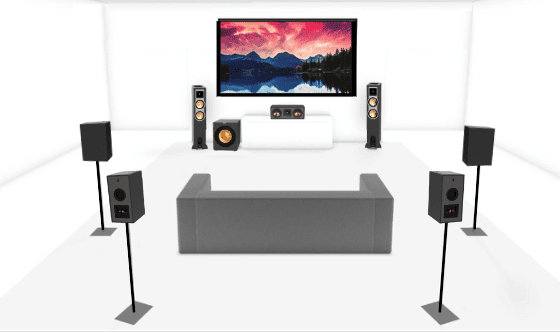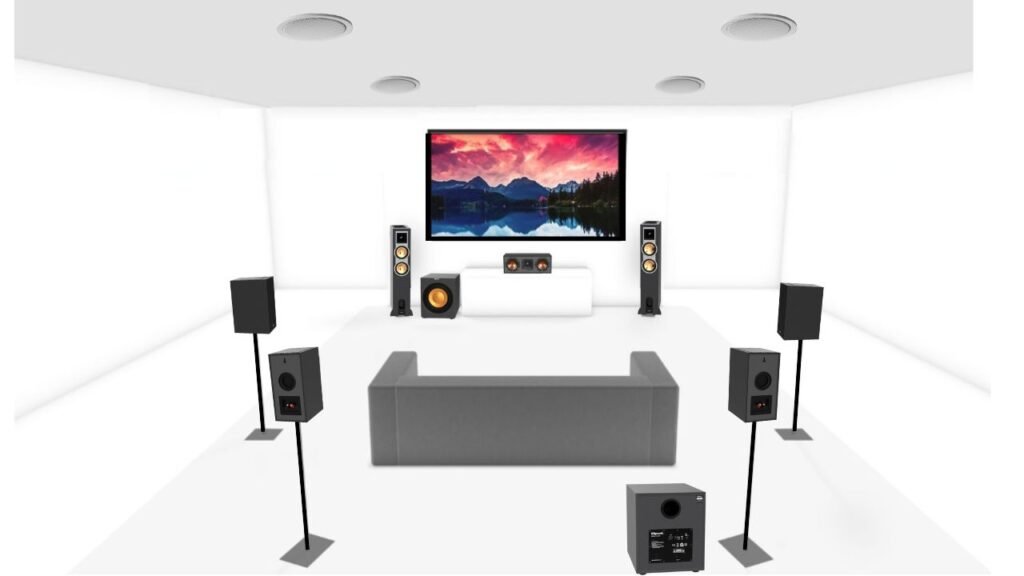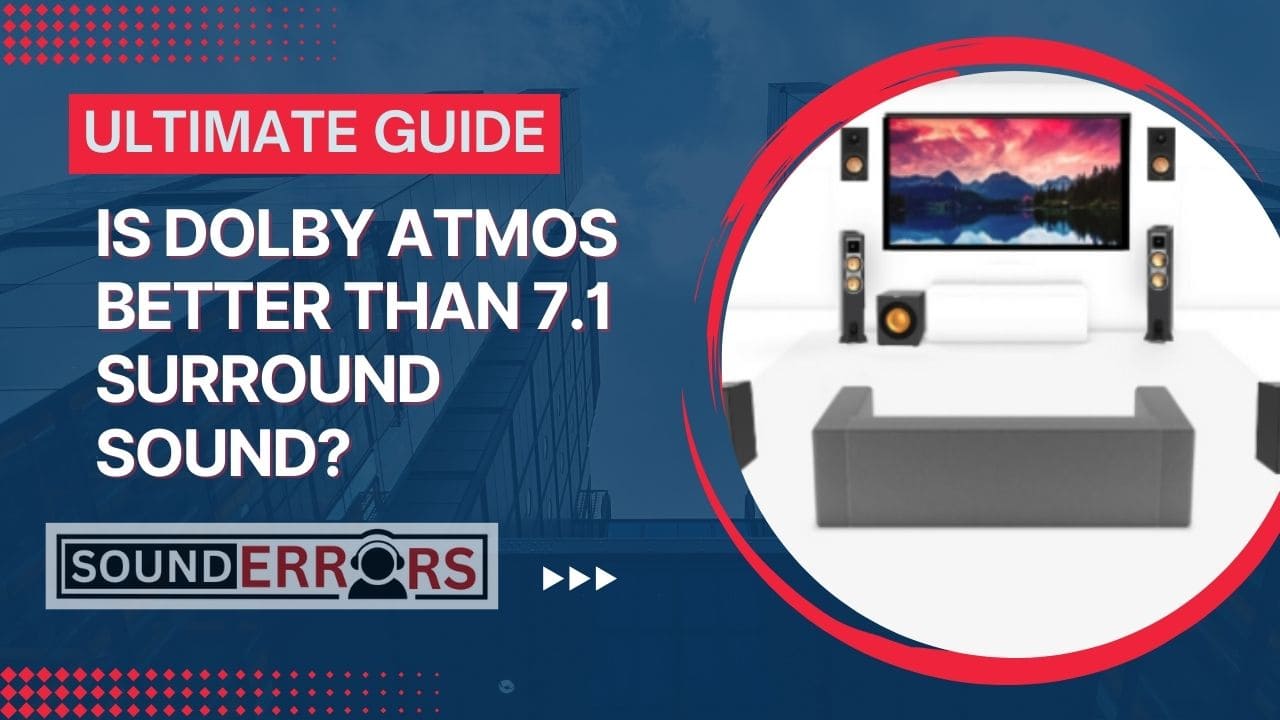This Post may contain affiliate links, when you purchase through links on our site, we may earn an affiliate commission at no extra cost to you. Here’s how it works.
Regarding home theater audio, two popular formats often come up for discussion: Dolby Atmos and 7.1 surround sound. Each has its unique features, advantages, and drawbacks. Both systems determine whether Dolby Atmos is superior to 7.1 and, if so, why that might be the case.
Table of Contents
ToggleUnderstanding the Basics of Both Technology
7.1 Surround Sound
7.1 surround sound is a well-established audio format that adds depth to the listening experience by incorporating eight audio channels: seven speakers and one subwoofer. The channels typically consist of:
- Front Left and Right: Create a wide soundstage.
- Center Channel: Handles dialogue and primary audio.
- Surround Left and Right: Provide ambient sound from the sides.
- Rear Left and Right: Add depth and fill in the back of the soundstage.
- Subwoofer: Delivers low-frequency effects for rumbling sounds.

This configuration is designed to create an immersive experience, but it remains limited to specific channels placed around the listener.
Dolby Atmos:
Dolby Atmos revolutionizes audio by introducing an object-based sound system. This technology allows sound designers to treat individual sounds as objects that can be placed anywhere in a three-dimensional space, including overhead.
Key features include:
- Object-Based Audio: Instead of being confined to channels, audio elements can be positioned in a 3D environment.
- Height Channels: Additional speakers can be added above the listener to create an immersive sound experience.
- Scalability: Atmos can be experienced in various formats, from headphones to large theater setups, making it versatile.

Advantages of Dolby Atmos Over 7.1
- Immersive Experience: The most significant advantage of Dolby Atmos is its ability to create a more immersive experience. By placing sound in a three-dimensional space, listeners can hear sounds coming from above, enhancing realism in action scenes, ambient sounds, and even subtle audio cues.
- Flexibility and Scalability: Dolby Atmos systems can be customized to fit various room sizes and layouts. While 7.1 systems are relatively fixed in their setup, Atmos can adapt to different environments and speaker configurations, making it suitable for both large theaters and smaller living rooms.
- Enhanced Audio Clarity: With Atmos, audio elements can be moved independently of speaker channels. This independence means sounds can be clearer and more distinct, providing a richer auditory experience. For example, you might hear rain falling from above or a helicopter flying overhead in a way that feels spatially accurate.
- Future-Proofing: As content increasingly supports object-based audio, investing in Dolby Atmos can be seen as more future-proof. More movies, games, and streaming services are adopting this technology, which could mean better compatibility with new releases.
- More Engaging Sound Design: For filmmakers and game designers, the ability to manipulate audio in a three-dimensional space allows for more creative soundscapes. This leads to a richer storytelling experience, where sound is an integral part of the narrative.
Limitations of Dolby Atmos Compared to 7.1
- Cost: Setting up a Dolby Atmos system can be more expensive than a traditional 7.1 setup. The need for additional speakers (especially height channels) and compatible AV receivers can significantly increase the initial investment.
- Complexity of Setup: Configuring a Dolby Atmos system can be more complicated than a 7.1 system. Users may need to consider room acoustics and speaker placement carefully to achieve the desired effect.
- Content Availability: While the amount of content supporting Dolby Atmos is growing, 7.1 surround sound remains a more common format. Users may find that not all of their favorite movies or shows support Atmos, potentially limiting the immediate benefits.
- Diminished Benefits in Smaller Spaces: In smaller rooms, the advantages of overhead sound may not be as pronounced. The impact of height channels can be lost in limited spaces, where a good 7.1 setup might still deliver an excellent experience.
Conclusion: Which is Better?
Whether Dolby Atmos is “better” than 7.1 depends largely on individual needs, preferences, and setups. If you are looking for the most immersive audio experience possible and are willing to invest in a more complex setup, Dolby Atmos offers distinct advantages. Its flexibility, object-based sound design, and future-proofing make it an appealing choice for audiophiles and home theater enthusiasts.
On the other hand, if budget, simplicity, and compatibility with existing content are your priorities, a traditional 7.1 surround sound system remains a strong option. It delivers a satisfying audio experience and can be easier to set up and enjoy without significant investment.
Ultimately, the choice between Dolby Atmos and 7.1 should be guided by your personal audio preferences, room size, and willingness to embrace new technology.
